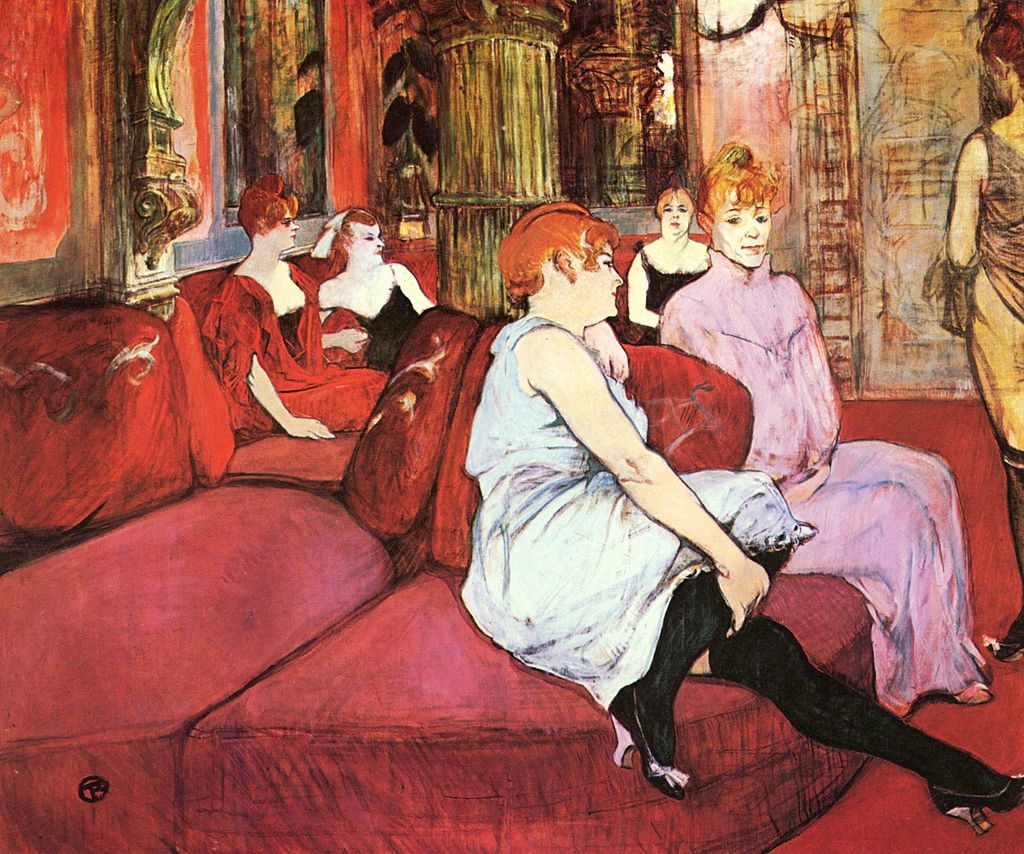Starting in the 1890ies, Toulouse Lautrec focuses on the distractions Paris has to offer: the theatre, the circuses, the tracks and also the brothels. He will draw numerous scenes of them. Except two or three saucy paintings the painter from Albi refuses to paint obscene, vulgar or venal prostitutes like other painters used to do at that time. There he started to break off with caricatures to get a more naturalistic touch that is also more human.
Realized in 1893, Au salon shows the house number 6 of the Rue des Moulins, situated close to the opera of Paris. The painter shows us the everyday life of these reclused women, living after the rhythm of the off-peak-hour. Idle, impassive and immobile they are waiting for a client. On the right hand side one of them seems to go the through the humiliating ritual of the medical check-up.

Attracted by the cosy ambiance of this place, accentuated by comfortable looking purple divans, the spectator is near to the scenario, on the same height as them. That enables him to see even the lines in their faces that Lautrec did with an unusual precision for a portrait of prostitutes.
But, even dough all that they reveal about their individual character, the faces do not contribute anyhow to the empty atmosphere of this salon. The silence of these women, their reddish hair, their lifeless and passive looks turn them uniform, like if they had resigned to the fatality of their conditions. As a regular customer, Toulouse-Lautrec was familiar with this kind of establishments. It is not improbable that he felt some affection for these women. However, he is not showing them like victims here. They don’t show some erotic enthusiasm nor are they overly sad. This nuance shows all the ambiguity of those establishments, that Lautrec also doesn’t want to question.
Translated from french by Marie-Sophie Buxbaum


